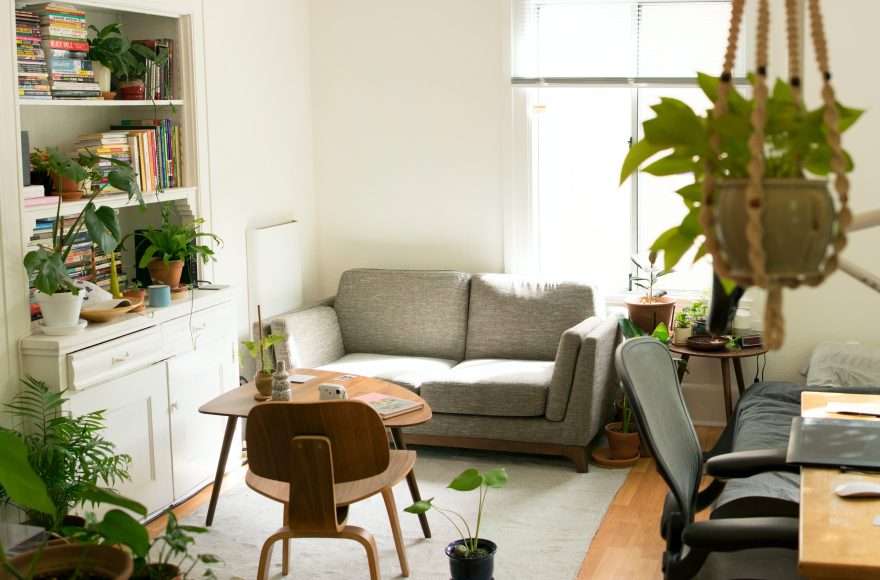How to Create a Stand-Out Interior Design Portfolio

A well-crafted portfolio can be key for any interior designer as it gives potential customers a glimpse into your work and style. You need to make sure that your portfolio stands out from the crowd and really shines if you want to capture people’s attention and get them interested in hiring you for their next project. This blog post will walk through how interior designers can go about creating a one-of-a-kind portfolio that shows off the best of what they have to offer, helping them make an impact with potential clients along the way.
Identifying Your Target Audience
As an interior designer, the importance of creating a portfolio that stands out from the crowd should not be underestimated. Crafting the perfect portfolio can be daunting, but it’s essential for success. Identifying your target audience and tailoring content to their tastes is key to crafting a successful portfolio. Thoughtful consideration should be given to what kind of space or aesthetic you are marketing yourself as an expert in; will you specialize in modern design, sleek minimalism, and maximalist glamour?
Knowing your target market is critical: what age bracket requires a creative twist on functionality in their home designs? Establishing a clear vision and understanding of who you are marketing to ensures that your portfolio stands out and effectively communicates your expertise in the art of beautifying living spaces.
Crafting the First Impression

Effective portfolios are essential for interior designers looking to get noticed in the competitive design industry. Crafting a distinctive first impression with a portfolio is key to standing out and showing professional quality work. Begin by researching the industry, trends, and potential employers, so the portfolio accurately reflects interests, expertise and knowledge. Then concentrate on incorporating visuals into the portfolio, including an array of design elements like bold textures, punches of colour, layered surfaces and well-released shapes.
The objective is to showcase how well each concept has been executed from conception through completion. By grounding the portfolio in detailed resources and excellent visual representations, your first impression will be strong enough to make any employer notice.
Choosing which Elements to Include
As an interior designer, selecting elements for a portfolio can be a daunting task. Showcasing work that demonstrates your unique vision and capabilities is incredibly important for displaying what you have to offer and demonstrating your creativity. Choosing pieces that are cohesive with each other is important, as well as selecting individual spaces or products that exemplify something special based on the context.
Additionally, if the interior designer works on multiple strategies, they can choose projects of different scales, such as large-scale commercial projects or smaller residential ones – this effectively shows the range of their skills and talents. Succinctly put, when creating a portfolio for interior design, carefully consider a well-balanced combination of projects along with meaningful captions to ensure it stands out from the competition.
Making a Professional Appearance
In the competitive world of interior design, having a professional portfolio is key to making an impression on prospective clients and employers. Creating a professional appearance is essential to create a portfolio that stands out in a crowd. Everything from the tone and format of writing to the layout, font choices, and graphics used should be carefully considered and planned to make sure that it looks as polished as possible.
Each element of the portfolio should be thoughtfully tailored to ensure that it accurately captures the best qualities of your interior design skills and showcases them aesthetically pleasingly. With this level of detail and attention given to your portfolio presentation, any potential customers or employers viewing it will surely notice.
Structuring Your Projects Clearly
As an interior designer, your portfolio speaks volumes about your work and skill—potential employers will base their decision on what you can show them. One of the best ways to ensure you get noticed for the right reasons is to structure your projects clearly. This means organizing them in a way that makes sense, with detailed yet succinct descriptions of what each project entailed. It should also allow visitors to your portfolio to get a good overview of your skills quickly.
Moreover, choosing photos that capture the aesthetics of each piece will make a big difference in terms of standing out from the competition. Overall, structuring your projects thoughtfully and taking pride in presenting them will ensure that you create an impressive portfolio that puts forward the quality of work you intend to pursue.
Establishing a Visual Theme
Establishing a visual theme in an interior design portfolio is key to creating a stand-out portfolio that reflects the creative avenues you explore as an interior designer. From classic traditional looks to modern and contemporary designs, selecting visuals that reflect your unique style and showcase the range of projects you can take on is essential.

Whether using warmer-toned photos for rustic cottages or brighter hues for quirky urban condos, carefully select images representing the essence of what you want to convey. By creating eye-catching visuals and strategically establishing a visual theme, you can curate an impactful portfolio that speaks directly to clients looking for the right designer for their project.
Showcasing Your Unique Perspective
Creating a stand-out portfolio as an interior designer involves showcasing your unique perspective and creative flair. Having worked in the industry helps to give you insights others may not have, allowing you to show your clients why choosing you is the right decision.
To start off, take some time to think carefully about what truly sets your work apart – be it the materials you use, the attention to detail or perhaps certain stand-out features like adding modern technology into a traditional space. It’s your opportunity to present yourself as much as it is showcasing designs, so make sure that whatever elements you include tell a story that can draw potential clients in. Setting yourself apart is no easy feat, but with a well-thought-out portfolio, potential customers will quickly see why you deserve their trust.

Presenting Yourself through Writing
As an interior designer, presenting yourself through writing can help create a stand-out portfolio. A portfolio is a great way to showcase your unique design style and experience in the field to potential employers or clients. Include any recognitions you have received and highlight your most high-profile projects.
Though it can be difficult to discuss oneself, consider being honest yet concise about the differentiators that set you apart from others. This could mean emphasizing anything from your impressive project management skills and design aesthetic that suits a specific job or client need. Showing off your personality will also go a long way in making you stand out from the competition – let your love shine by talking about what inspired your designs and why they connect with people.
Leveraging Technology to Stand Out
As an interior designer, there are many ways to create a portfolio that stands out, but leveraging technology can often be the most effective. The use of technology such as virtual reality and professional photography can bring your clients’ envisioned designs to life and make them tangible in a way that was not possible before. By integrating modern technology into your portfolio as an interior designer, you will be able to differentiate yourself and draw attention from potential employers and clients.
Furthermore, by showcasing complex projects within virtual environments, you can demonstrate capabilities that wouldn’t otherwise be known. Therefore, using technology to create a stand-out portfolio is critical for interior designers and anyone wanting to advance their career in the industry.
Complementing Your Portfolio with Linked Accounts
To further showcase your skills and expertise as an interior designer, it can be helpful to include linked accounts in your portfolio. For example, having an Instagram account with a selection of your most eye-catching designs is a great way to build an online following and get noticed by potential clients. Another option is to create a Houzz account where you can display your previous projects, receive feedback and connect with others in the interior design community.
In addition to these more mainstream options, consider connecting with other interior designers or hotel decorators in your area through LinkedIn or other social media platforms. This can be a great way to network, share your work, and stay up-to-date with the latest trends in the industry. Remember, in today’s competitive market, having a strong online presence can make all the difference when it comes to getting your name out there and attracting new clients.
Conclusion
When creating a portfolio, you must best curate your work to reflect your taste and style. Keep in mind the type of clientele you wish to attract, and be sure to edit your photos accordingly. A well-designed portfolio will help set you apart from other interior designers and increase your chances of landing dream clients.

